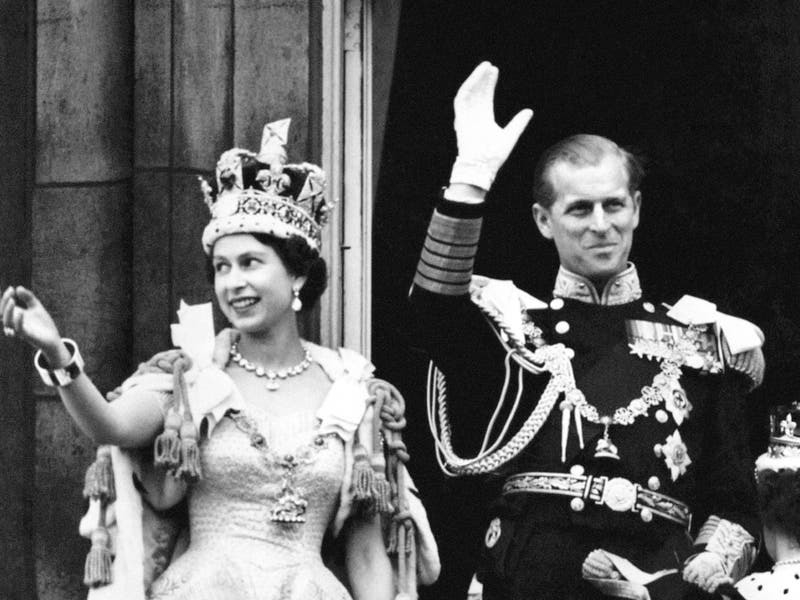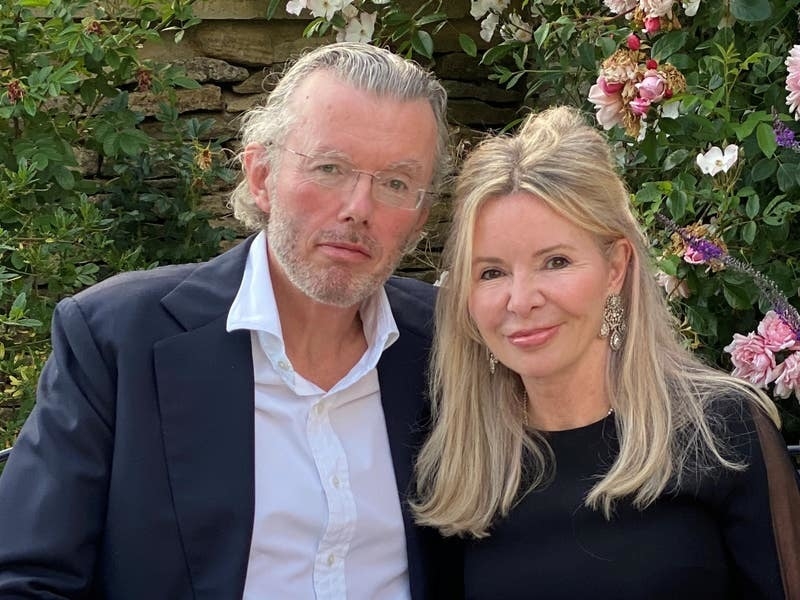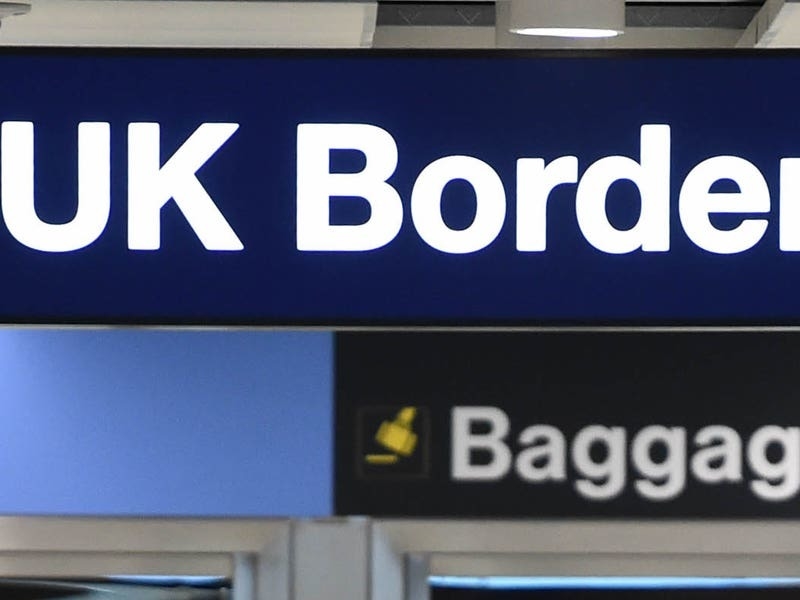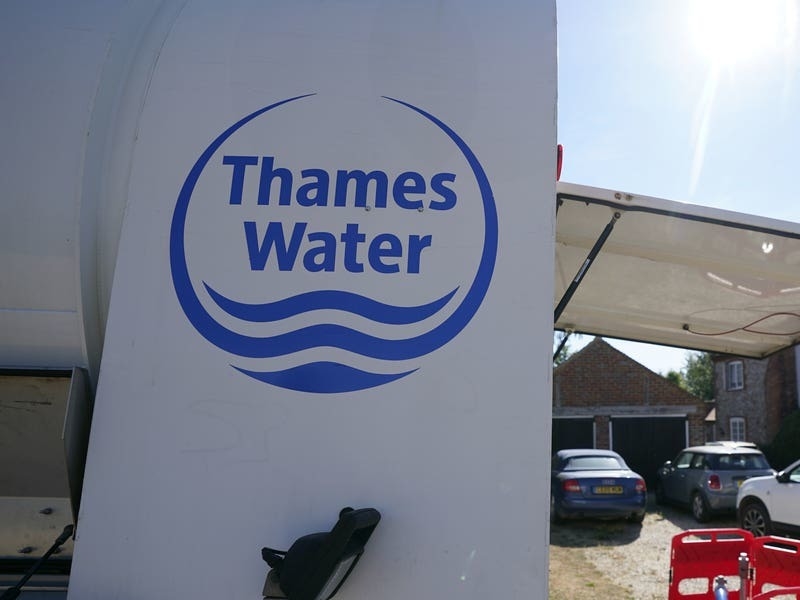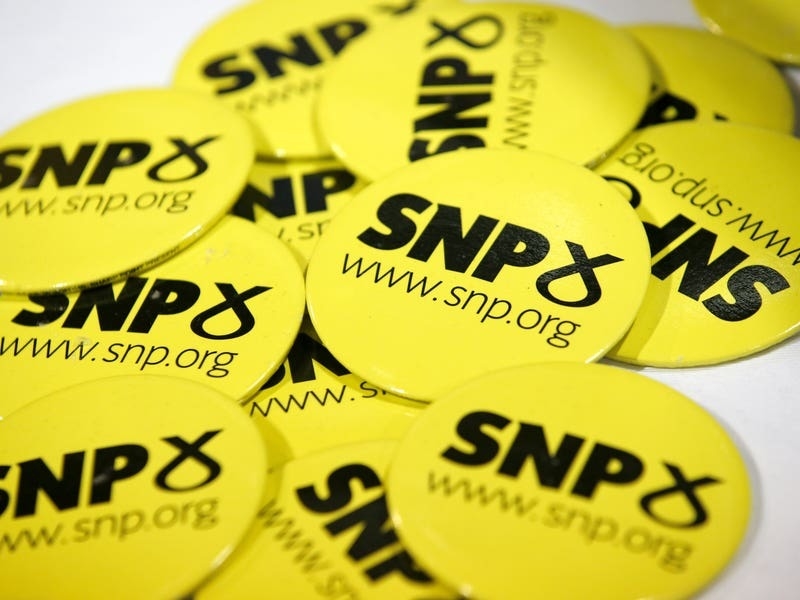The 1953 coronation was a morale boost in the tough post-war years as millions celebrated the historic day.
Elizabeth II was crowned in a deeply religious ceremony in Westminster Abbey on June 2 1953.
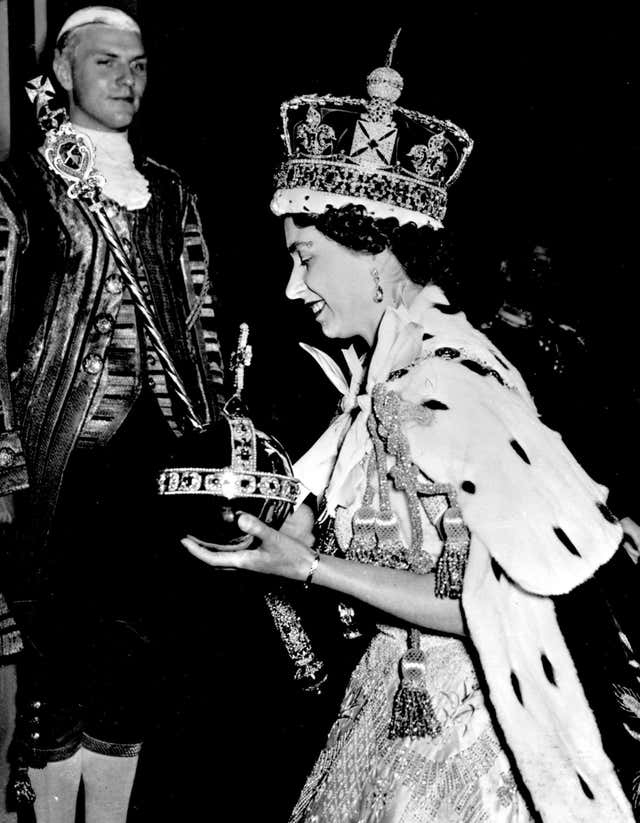
By Monday evening, in pouring rain and driving wind, half a million people were already lining the procession route.
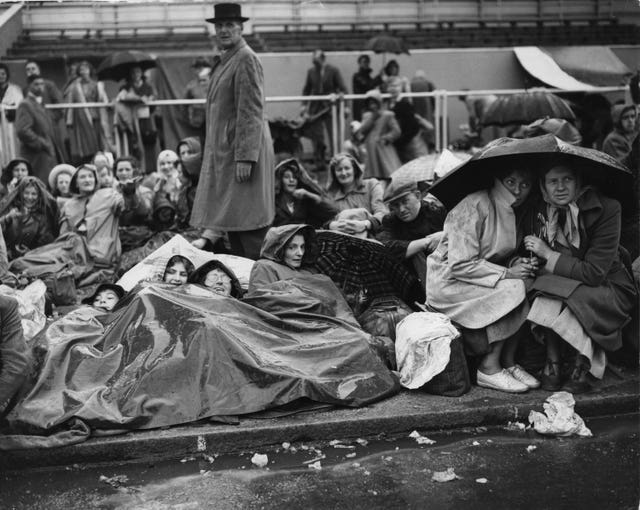
Charles – now King – has recalled the night before the big day.
“I have vivid memories of the coronation; of my mother coming to say goodnight to my sister and me while wearing the crown so that she could get used to its weight on her head before the coronation ceremony; of thousands of people gathered in The Mall outside Buckingham Palace chanting ‘We want the Queen’ and keeping me awake at night,” Charles, who just four at the time, remembered.
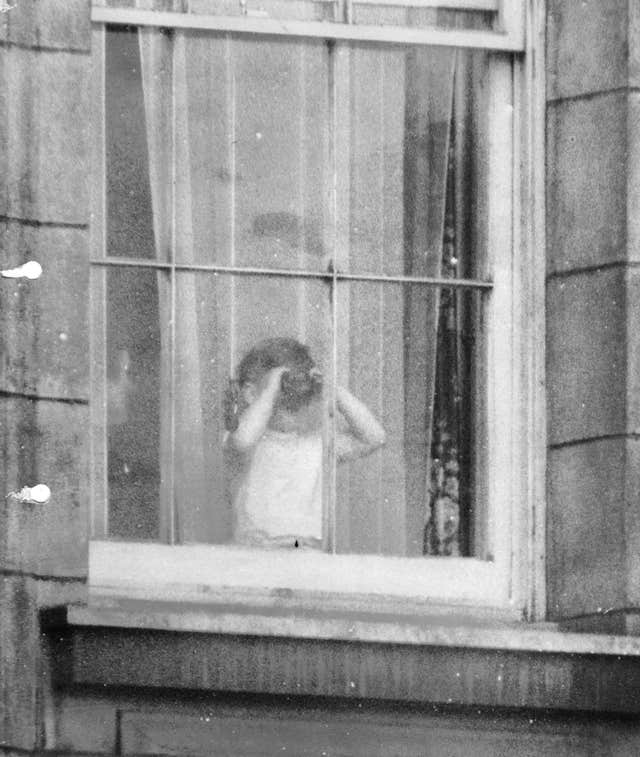
A smiling Queen Salote of Tonga won the hearts of the waiting crowds when she refused to raise the roof of her carriage for protection despite the rain.
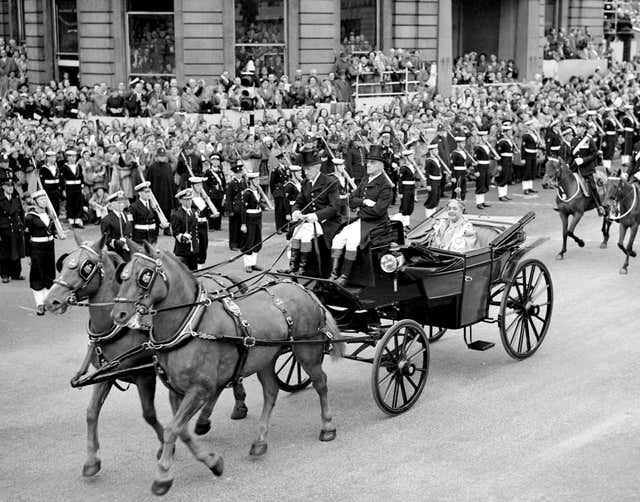
Despite initial reservations, the Queen eventually agreed to the TV cameras being present in Westminster Abbey to capture the event.
Licence holders doubled from one and a half million to three million in anticipation and many people rented a set for the day.
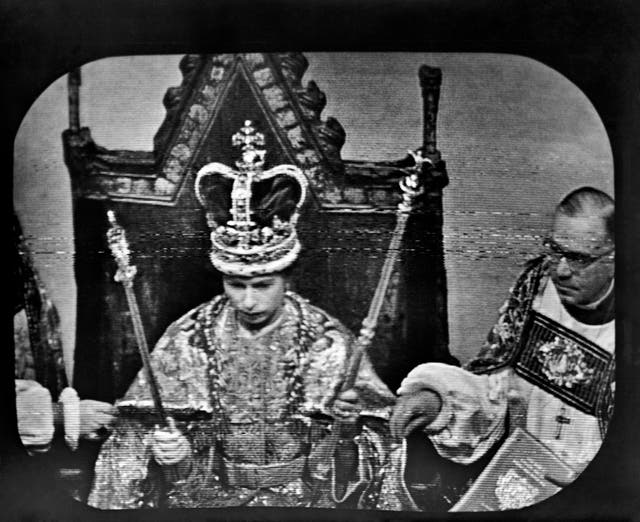
The uncrowned Queen Elizabeth II – she actually wore the George IV Diadem on the journey – set out from Buckingham Palace in the Gold State Coach, escorted by the Yeomen of the Guard, the Household Cavalry and the Royal Bargemaster and Royal Watermen.
Through the unwelcome drizzle, a continual roar followed the coach from the Palace, along The Mall, and in an extended circular route to Westminster.
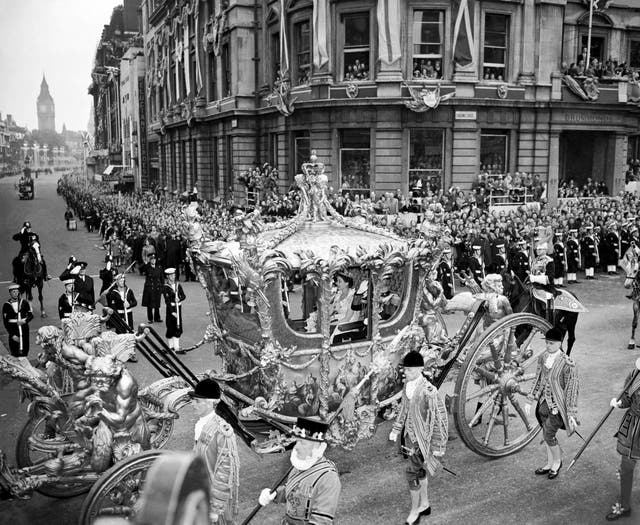
“It’s only sprung on leather,” she said of the coach, adding: “Not very comfortable.”
The Queen and the Duke of Edinburgh, who was in the full-dress naval uniform of Admiral of the Fleet, departed just after 10.30am pulled by eight grey geldings – Cunningham, Tovey, Noah, Tedder, Eisenhower, Snow White, Tipperary and McCreery.
The sovereign’s procession, as it entered the abbey, was 250-strong with traditional representatives from crown, church and state.
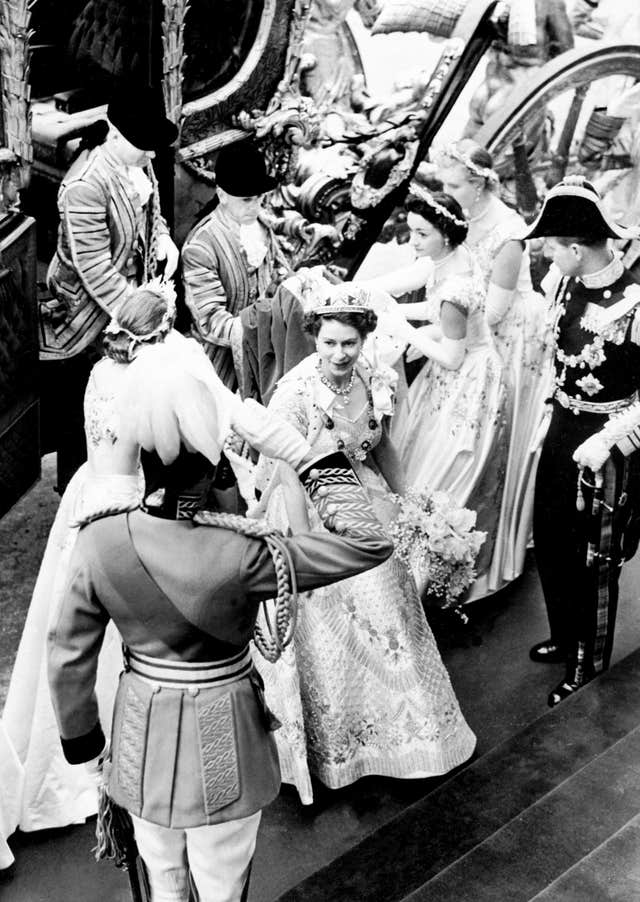
Others in the procession carried two royal maces, three swords symbolising mercy, spiritual justice and temporal justice, the Great Sword of State and St Edward’s Staff.
Just before she entered the church, the Queen is said to have paused, turned to her coronation maids of honour and asked: “Ready girls?”
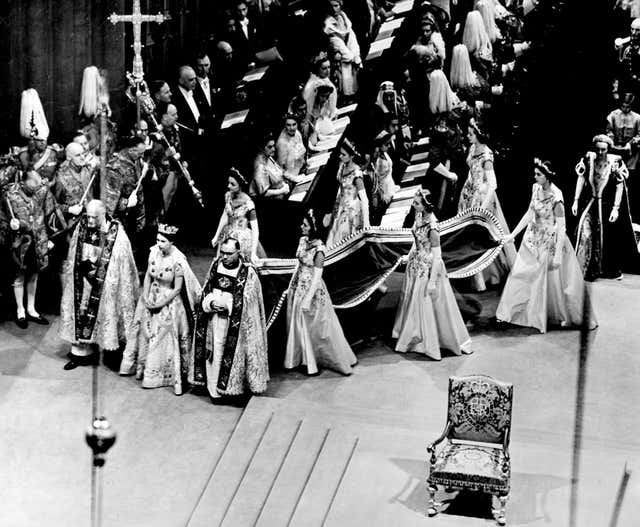
“I remember one moment when I was going against the pile of the carpet and I couldn’t move at all,” she remarked.
She is said to have asked for a push from the Archbishop of Canterbury Geoffrey Fisher, telling him “Get me started”.
Her coronation dress, by couturier Norman Hartnell, was a far cry from post-war clothing coupons.
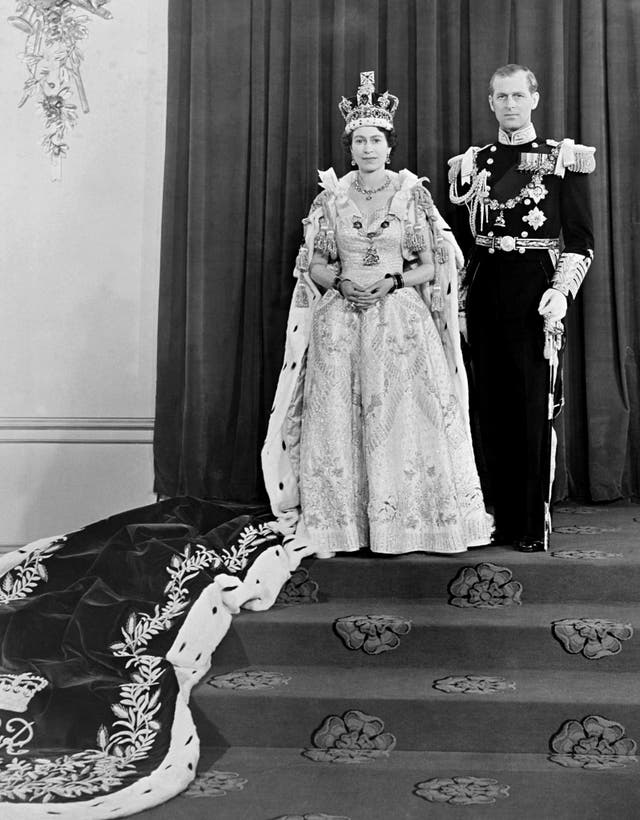
Embroidery in pastel-coloured silks depicted the emblems of the United Kingdom and countries of the Commonwealth.
Her all-white bouquet echoed the symbolic theme of unity with orchids and lily of the valley from England, more orchids from Wales, stephanotis from Scotland, and carnations from Scotland and the Isle of Man.
She wore a diamond collet necklace, made for Queen Victoria, and matching drop earrings, with the collar or chain of the Order of the Garter.

The three-hour service, which took place in front of a congregation of more than 8,000, began with the Archbishop’s declaration to the assembled bishops: “Sirs, I here present unto you Queen Elizabeth, your undoubted Queen.”
The Queen took the oath, finishing with the words: “The things which I have here before promised, I will perform and keep. So help me God.”
The Holy Communion and the act of anointing followed, hidden from the cameras and congregation by a silken gold canopy put over the Queen’s head by Knights of the Garter.
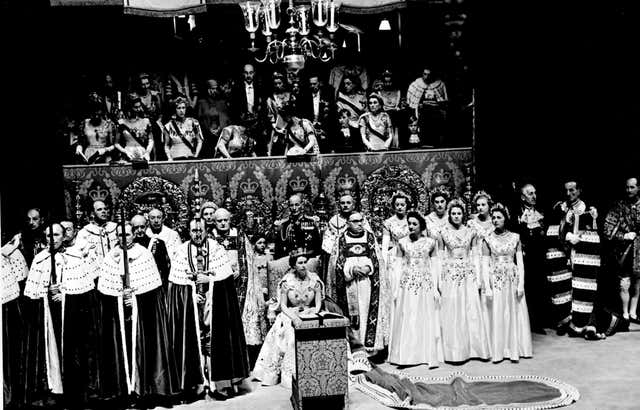
The anointing had the deepest significance and was the central act of the religious ceremony.
The anointing oil contained oils of orange, roses, cinnamon, musk and ambergris. Usually a batch is made to last a few coronations, but in May 1941 a bomb hit the deanery, destroying the phial containing the existing oil so a new batch had to be made up.
The pharmacy that mixed the last anointing oil had gone out of business, but the recipe was found.
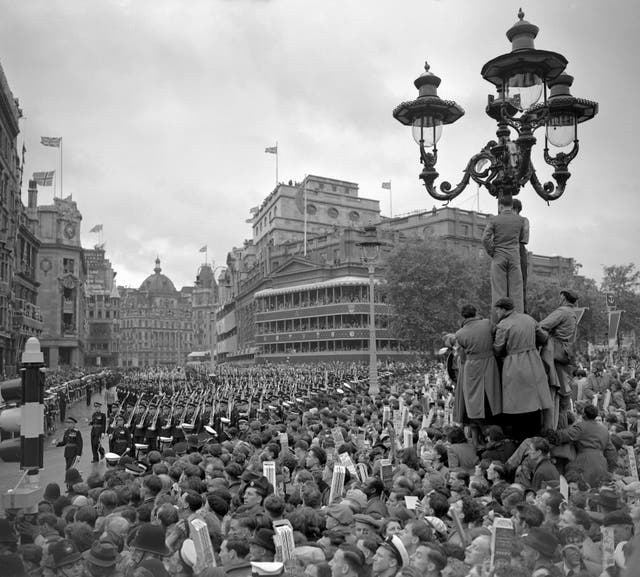
She first put on the newly made Colobium Sindonis – a loose linen-lawn garment, and then a robe of cloth of gold – the Dalmatic or Supertunica, which was used by King George VI.
The Lord Great Chamberlain presented the golden spurs, the symbol of chivalry, after which the Archbishop of Canterbury presented a jewelled sword, and then the armills, the golden bracelets of sincerity and wisdom.
Finally, the Queen put on a stole and cloth of gold Robe Royal (Imperial Mantle) and received the orb, the coronation ring, the glove, which was newly made and presented by the Worshipful Company of Glovers, and the sceptres.
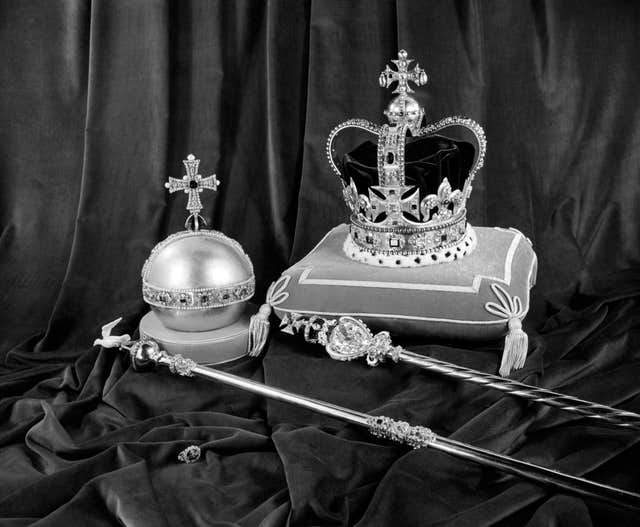
It is a globe of gold surrounded by a cross girdled by a band of diamonds, emeralds, rubies, sapphires and pearls with a large amethyst at the summit.
Next came the crowning. The archbishop held the majestic St Edward’s Crown above the 27-year-old Queen for a few moments and then brought it carefully down, placing it on her head.
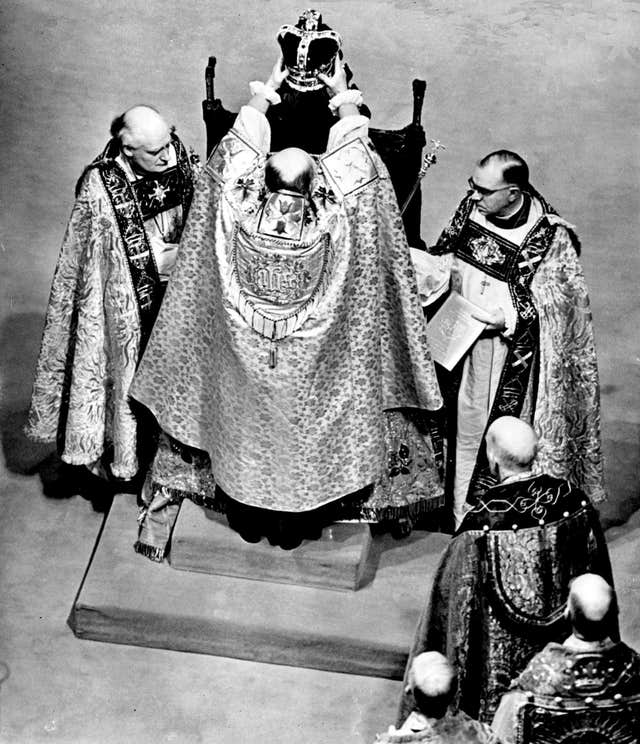
It was used by Charles II and is believed to have been adapted from one that belonged to Edward the Confessor.
This done, all the princes and princesses, peers and peeresses put on their coronets and proclaimed: “God Save the Queen.”
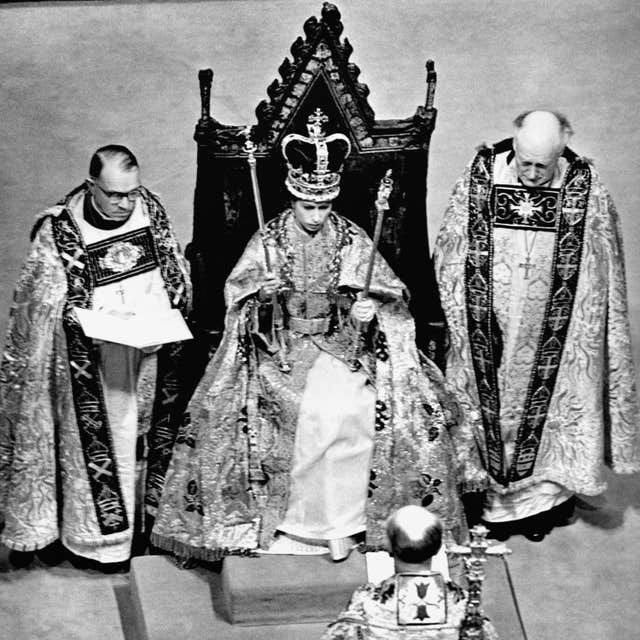
Homages from the archbishop, the Duke of Edinburgh and the senior nobility followed with the acclamation: “God Save Queen Elizabeth. Long live Queen Elizabeth. May the Queen live forever.”
Philip swore to be his wife’s “liege man of life and limb” and was the first layman to pay tender homage to the newly crowned monarch.
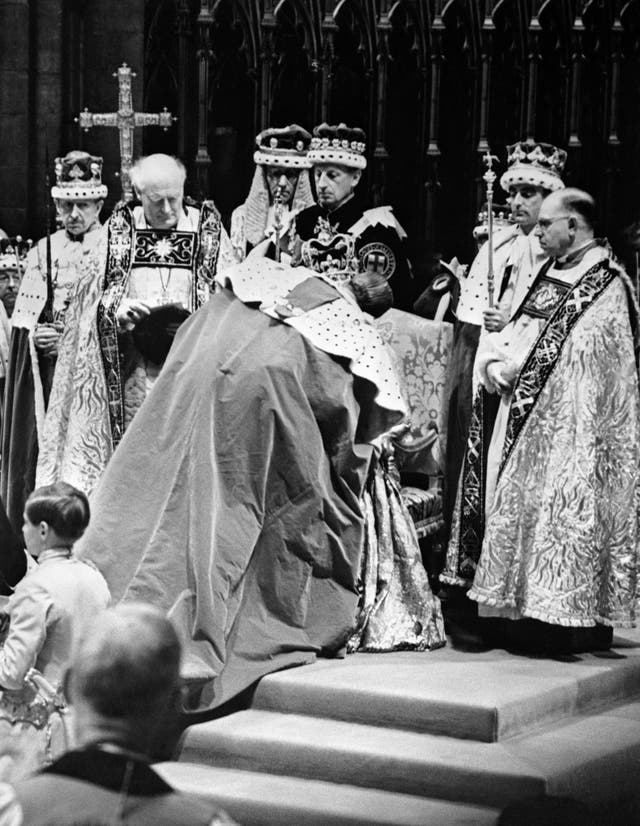
He stood, touched her crown and kissed her left cheek.
Unlike a Queen Consort, Philip, as the husband of a reigning queen, was not crowned or anointed at the coronation ceremony.
But he did kneel beside her to receive a special blessing from the archbishop.
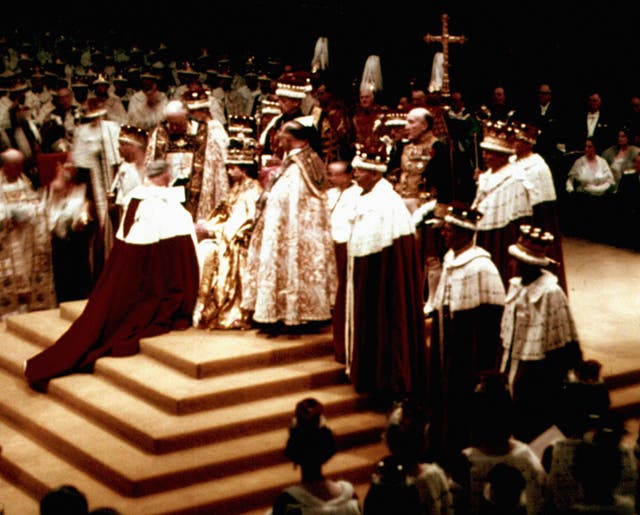
This was abandoned but, before the coronation, the Queen declared an amnesty for deserters from the armed services.
A further deviation from tradition was that a representative from outside the Anglican Church – the Moderator of the Church of Scotland – was present for the first time.
Prince Charles watched in the abbey seated between his grandmother, the Queen Mother, and his aunt, Princess Margaret, and he became the first child in British history to witness their mother’s coronation as a Queen Regnant.
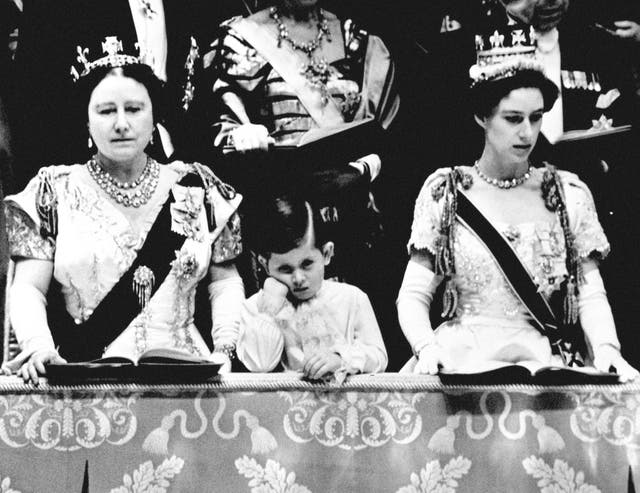
The sovereign finally withdrew to St Edward’s Chapel, changed into the purple velvet Robe of Estate and put on the lighter Imperial State Crown for the journey back to the Palace.
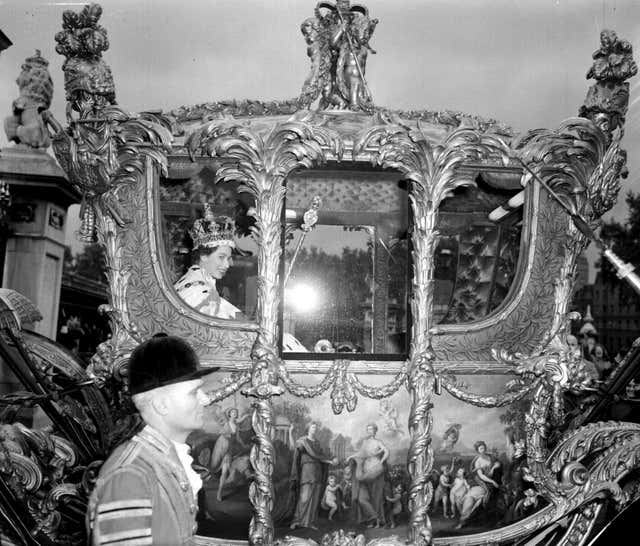
Each Commonwealth prime minister had his own carriage and, for the first time, there was a shortage of professional coachmen.
Millionaire businessmen and country squires offered to dress up as Buckingham Palace servants and drive the British and other prime ministers – an offer that could not be refused.
Coronation chicken was invented for the foreign guests who were to be entertained after the coronation.
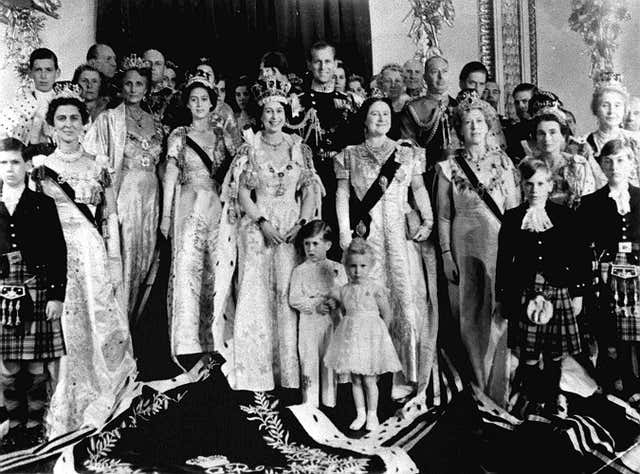
Back at Buckingham Palace, the Queen, wearing her crown, and Philip appeared on the balcony with the other members of the royal family.
Their children, Charles and Anne, were greeted with great excitement by the crowds.
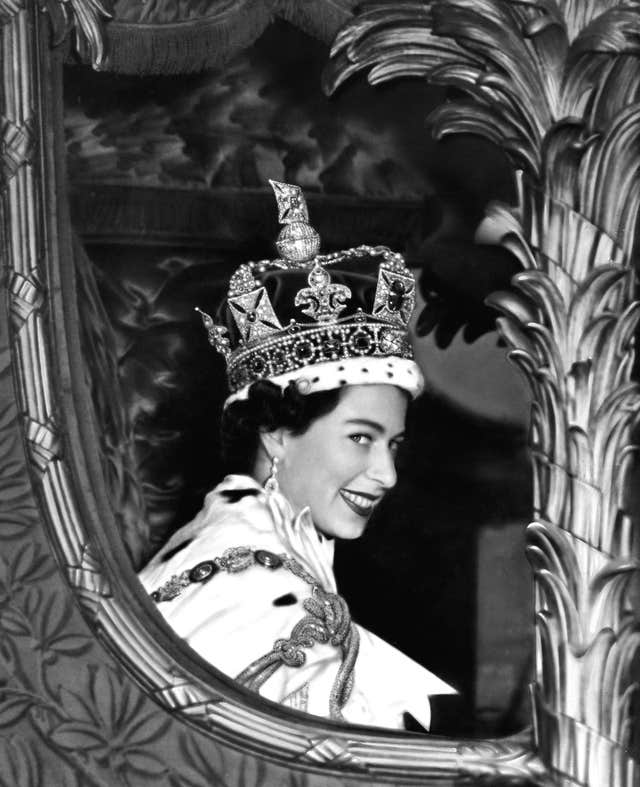
“All of you, near or far, have been united in one purpose. It is hard for me to find words in which to tell you of the strength which this knowledge has given me,” she said.
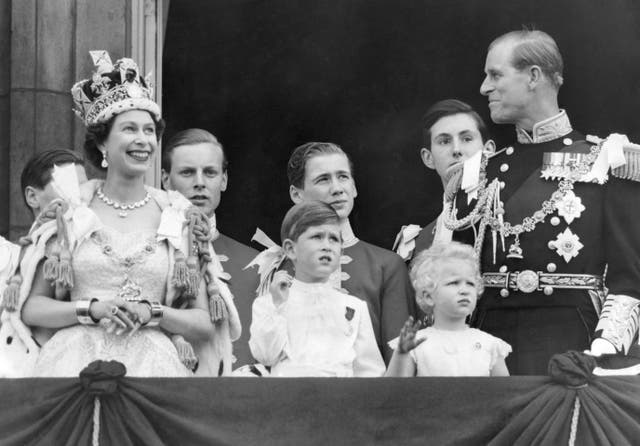
“Throughout all my life and with all my heart I shall strive to be worthy of your trust.”
The sixth and final appearance of the Queen and the duke on the balcony was at midnight.
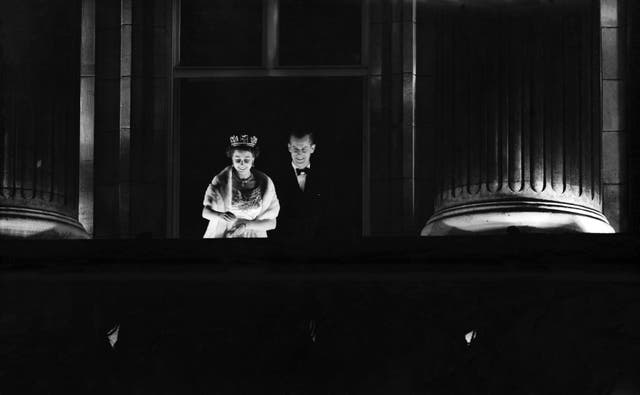
Bowler hats were held high on umbrellas, balloons were released and streamers festooned the Palace railings.
The night came to an end as hundreds of thousands on Victoria Embankment watched a spectacular coronation fireworks display.

